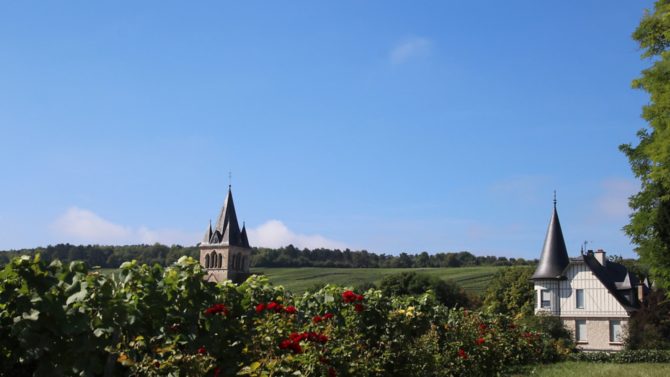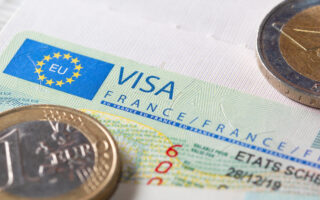Where to retire to in France

If you’re looking for a peaceful and well-connected area in which to enjoy your retirement in France, you’ll find these five departments offer great value for money and a relaxed lifestyle

Marne, Grand Est
Each year, millions of tourists visit the Marne, drawn to its two most famous towns – Reims, the unofficial champagne capital, where the kings of France were crowned at the Gothic cathedral, and Épernay, famous for its champagne houses.
However, the department has many more treasures on offer and as a place to retire to, there’s plenty to tempt. There’s a thriving cultural life with many festivals, châteaux, museums and areas of outstanding natural beauty including the Montagne de Reims regional nature park.
There are numerous little villages and towns with excellent facilities. A range of property is available from apartments in towns like Chalons-en-Champagne, the departmental capital, even a house boat on the River Marne, and prices outside of the main tourist areas are surprisingly good.
Expat Susan Pearce who lives in a village between Vitry-le-François and the Lac du Der says: “This area is brimming with activities. Lac du Der is one of the largest manmade lakes in Europe and has something for everyone – beaches, swimming, restaurants, sailing and watersports – but it’s also a nature reserve and has some really quiet and tranquil spots which are great for observing the bird life. It is quite a hidden gem.”
It’s a surprisingly overlooked area for British buyers despite the champagne vineyards on your doorstep, and offers an unrushed lifestyle. With great transport links – 45 minutes to Paris by train, just a few hours from Calais for ferry and Eurotunnel links to the UK – it’s definitely one to consider.

Somme, Hauts-de-France
The Somme department has a diverse landscape and boasts the Baie de Somme, officially one of the most beautiful bays in the world, with pretty seaside towns as well as glorious countryside.
Amiens, the capital, is home to an 800-year-old Gothic cathedral, the biggest in France. In the shadow of its tall spire are the medieval floating gardens, les hortillonnages. The department has a rich history and culture, and bears the scars of battles fought on its soil in two world wars. “Many who retire here have an interest in history but there’s much more to the Somme,” says local Leggett Immobillier agent Tim Sage (leggettfrance.com). “There are lots of small towns that offer the main tick box priorities for retirees with facilities such as shops, bars, doctors. Doullens, for instance, has everything, and a pretty citadel. And Long, which has been selected to represent Hauts-de-France in the annual ‘favourite village of the French’ contest, has great facilities plus an 18th-century castle overlooking the River Somme.
“The rail system is excellent; you can be in Paris in an hour from Amiens, and transport links to the UK are super (Eurostar and ferries from Calais and Dunkirk). Just £190,000 will get you an excellent property with enough bedrooms for friends and family to come and stay.”
If you love to be beside the sea, charming Le Crotoy is very residential while medieval St-Valery-sur-Somme across the bay is more touristy, a bit like a mini-Honfleur. Inland, medieval Rue, close to the famous Marquenterre bird reserve, has a lovely market, cobbled streets and plenty of restaurants. Montdidier is a thriving small town with a buzzing main square and centre. Nature lovers will find the vast plains, forests and valleys offer wonderful activities including walking, cycling and boating.
British expat Vic Piuk who has a B&B near the Somme valley says: “There are many reasons to retire here but if you love history, culture, nature, the seaside and great food – you’ll love it here.”

Sarthe, Pays de la Loire
Sarthe is located in west-central France in the Vallée du Loir, considered the little brother of the Vallée de la Loire. Quieter than its grand neighbour it nevertheless has châteaux and vineyards galore with two AOC wines: Jasnières, a delicious white, and Coteaux du Loir. It’s an uncrowded department, with almost 50% of the population concentrated in and around the car-racing capital Le Mans.
The climate of Sarthe is a big draw for expats, not as hot as the south but warmer than Normandy and Brittany with mild winters and rare snow. It’s a very green region; even from Le Mans the public tram service reaches glorious countryside in just a few minutes, and keen gardeners will love the lush terrain.
There are lots of tranquil villages dotted throughout the area, but you’re never far from facilities as there are plenty of good-sized towns like La Flèche with its marvellous weekly market and wonderful zoo, Le Lude, home to a monumental 18th-century castle, and Sable-sur-Sarthe, famous for its shortbread-like biscuits.
“Sarthe is a friendly area,” says local Leggett Immobillier agent Elizabeth Lewis (leggettfrance.com). “You’ll receive a warm welcome from the locals. The Loir valley may be a little less glamorous than its neighbour, but it’s definitely cheaper and it’s glorious in its own right. There’s a whole range of wonderful property for sale from castles to mill houses, cottages and farmhouses.”
It’s a very well-connected region too with road links to Paris, Rennes, Nantes, Angers, Calais, Rouen and Tours, and less than an hour to Paris from Le Mans by train. There are good links to the UK via Paris/Eurostar, from Caen by ferry, and flights from Tours airport.

Vendée, Pays de la Loire
The Vendée in western France is known for its long coastline and sandy beaches considered to be some of the best in Europe, such as Les Sables-d’Olonne and St-Jean-de-Monts. It’s a large department with a surprisingly diverse landscape, glorious countryside, lakes, marshes and forests. The weather is good year-round with 240 days of sunshine and long, hot summers with a gentle Oceanic breeze. Alfresco dining is possible in early spring, and winters are mild.
Inland, the Vendée is a bit of a hidden pocket of France. Smaller villages around La Roche-sur-Yon, a ‘new town’ built by Napoleon Bonaparte and capital of the Vendée, offer a tranquil lifestyle with access to excellent facilities. The Renaissance market town of Fontenay-le-Comte stretches down in a gloriously straight line from a lofty, green square at the top of the town, across the River Vendée and then up again. It’s a little sleepy unless you arrive on market day. The joy of the Vendée is the myriad lovely little towns that dot the department.
“Property prices here are very good,” says property agent Patrick Joseph (my-french-house.com). “In the more touristy parts of the coast like Les Sables-d’Olonne it’s more expensive but head inland and you’ll discover lots of farmhouse and cottage style properties at very tempting prices. A three-bedroom house with pool for under £200,000 is not unusual.
“It’s a slower pace of life in the Vendée but with lots of activities which attract many French retirees looking for a better quality of life. Plus there’s a vibrant international community.”
Despite being distinctively rural, there are good transport links from La Rochelle airport, ferries from neighbouring Brittany and a motorway to Calais, so the department is well connected.
Corrèze, Nouvelle-Aquitaine
Corrèze, in south-west France, is a land of outstanding natural beauty with unspoiled countryside, dramatic rivers and forests as well as gentle farmland and a thriving agricultural economy including fruit, cereals and chestnuts.
The department is uncrowded, the most inhabited town being Brive-la-Gaillarde (circa 50,000), while the capital Tulle has fewer than 20,000 residents. There are lots of very pretty little towns and villages, like Ségur-le-Château, Pompadour and Coussac-Bonneval which have great facilities, as well as lively Lubersac, a historic town with a vibrant market square.
The region is popular with nature lovers and holidaymakers with lots of sports and activities from hiking and cycling to watersports and horse-riding. It’s also a foodies’ paradise with festivals dedicated to food and marvellous street markets.
Although it’s an inland department, you can reach the beaches of the Atlantic coast within a few hours, as well as enjoy a weekend in Spain or Paris, both within six hours’ drive. The weather is clement year-round with long hot summers and clearly defined seasons.
“There’s a huge range of house styles and you’ll certainly get more for your money than in neighbouring Dordogne,” says property agent Patrick Joseph. “Stone-built houses and converted barns are very popular with buyers. We have a château for sale with a pool at less than £350,000 and mansions can cost as little as £300,000. You’ll also find lots of bargain properties that need renovating and properties with lakes – ideal for those who love to fish.”
The A20 motorway from Paris to Toulouse runs through Corrèze, and there are UK flights from Limoges airport and Brive-Souillac international airport which has brought more tourists to the area.
Don’t miss
Share to: Facebook Twitter LinkedIn Email


